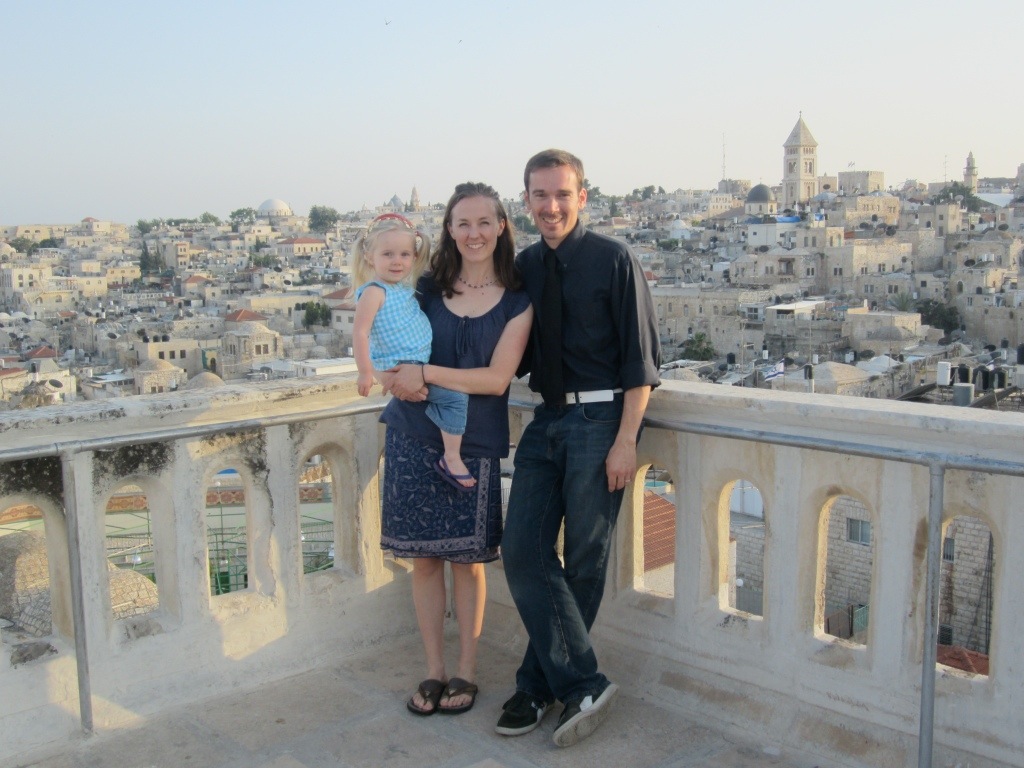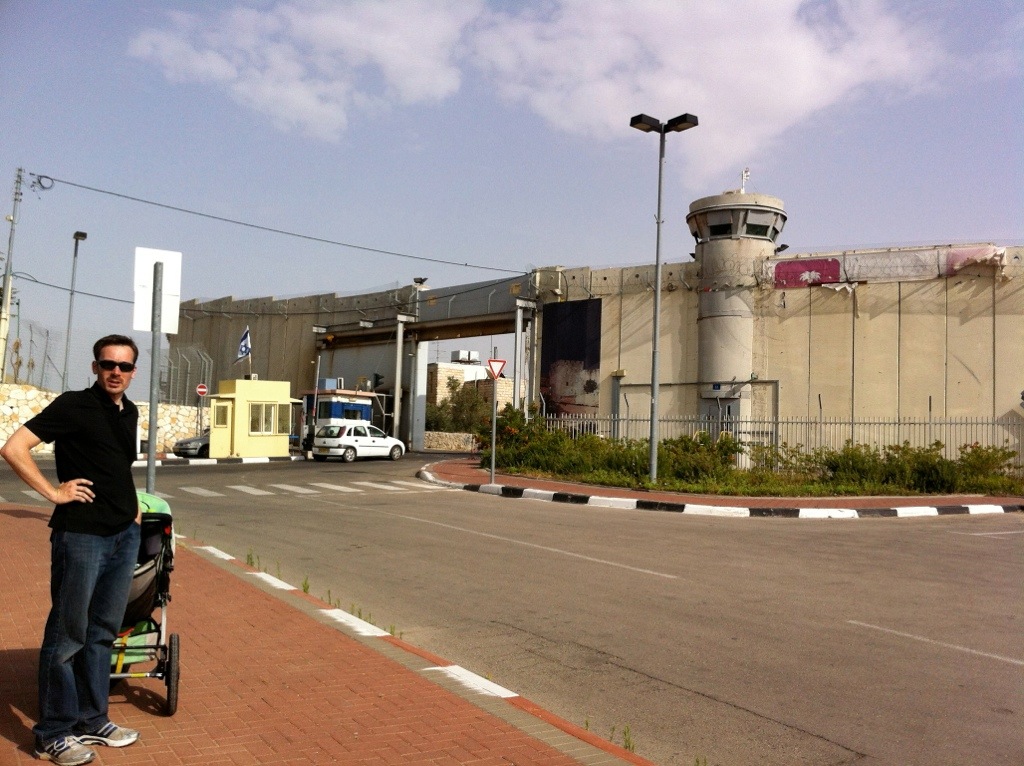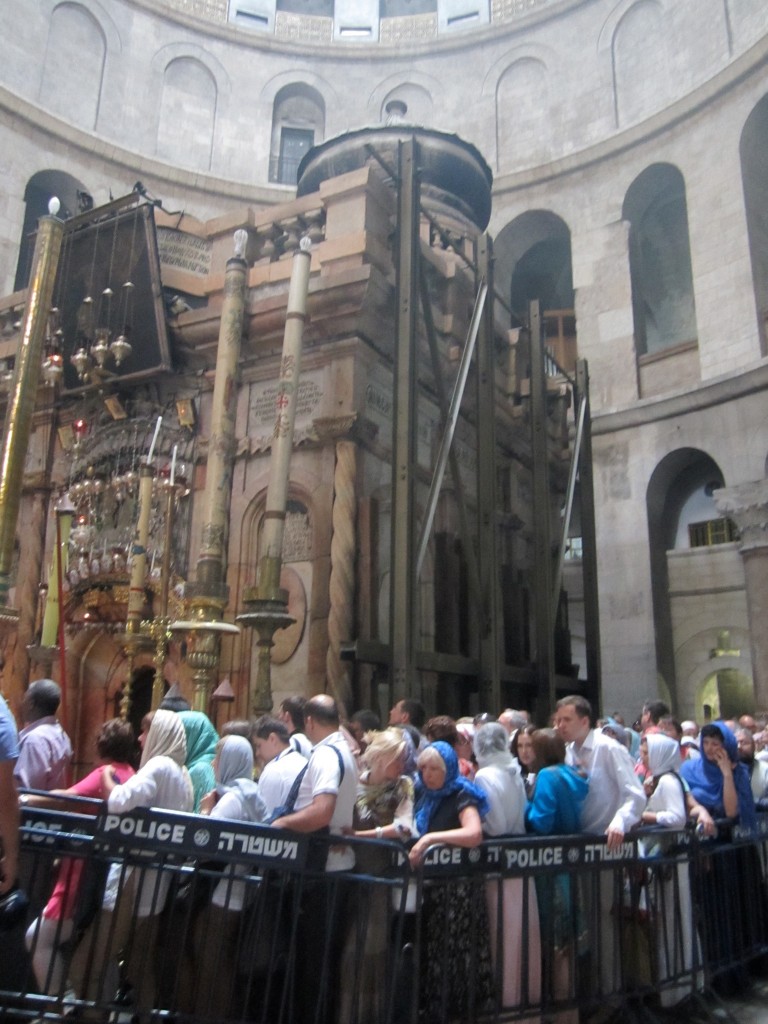
Just last week, we returned from our 10-year wedding anniversary trip to Israel and the West Bank. Most of our time was spent in Israel proper, but we did get a chance to see Bethlehem and Herodian, which are in the Palestinian Territory of the West Bank. I was here 13 years ago for school and since that time, they have built an enormous barrier wall (and are still building) between Israel and Palestine. The political and social ramifications of “The Wall” are enormous and can be positive or negative depending on who you talk to, but that’s a bit much to get into right now…

Sarah, Kezzie, and I explored the country on foot and with a rental car, a Bible, a guidebook, and LOTS of water. It was a vacation/pilgrimmage for us. And it was a thrill to show my family around to the places I once lived and studied in years ago. We also did some new things that I never did when I was here before, including learning about new archaeological finds over the past decade – namely the tomb of King Herod the Great (now on display at The Israel Museum) and the foundations of King David’s Palace at the City of David.
I will publish more posts about our trip as the days and weeks go by, but I will mention one thing to start in this post. And that is the difference between historical sites and traditional sites in Israel/Palestine. This is an important distinction to know for anyone visiting the Middle East (or any other part of the world that displays history, for that matter).
A historical site is a geographical location that verifiably marks an actual point/place where something once happened in history. A traditional site is a geographical location that marks a historical event, but it may or may not be the actual place where it happened (often the location is just a guess or a site that has traditionally marked an event).
For example, there are two main sites that remember the death, burial, and resurrection of Jesus Christ: The Church of the Holy Sepulchre and The Garden Tomb. These two sites are less than a kilometer apart, but they cannot both be the location of the resurrection. Historically and archaeologically speaking, the actual site is probably the Church of the Holy Sepulchre. But the Garden Tomb traditionally marks the event, even though historical research has shown that it it highly unlikely to be the right location. In my opinion, The Garden Tomb is a more peaceful, tranquil garden-like atmosphere that gives you a better feel for the setting of the resurrection narrative. The Church of the Holy Sepulchre has been built over with centuries of layers of buildings, not to mention the volatile power-struggles among custodial church groups.


And there are plenty of examples of this all over Israel. It is good to know if you are at an actual historical spot or just at a place where people remember a particular event. There is the Inn of the Good Samaritan on the road between Jerusalem and Jericho. Tour busses flock to it. The only problem? The only place we learn about this inn in the Bible is in a parable, which is an metaphorical story – not a real actual event. So that would be another type of traditional spot as opposed to historical.




3 responses to “Israel: The Land of the Bible”
What a amazing story and lesson of ur trip. Love the pics. Can’t wait to hear more.
Hi Jesse,
very interesting article. Any chance you can share your day by day itinerary? I would be interested in travelling to Israel with our toddler and it would really help us plan our trip. thank you!
Hi, it was a long time ago, so I don’t remember the exact itinerary. We stayed in Jerusalem for the first week of our stay and then rented a car and drove around the rest of the land for the second week. We started at Masada, then drove up to Beit Shean, Nazareth, Tiberias, Tel Dan, Nimrod’s Fortress, Caesarea, and finished at Tel Aviv. You can really move the puzzle of your itinerary around in many ways. Thanks for reading.